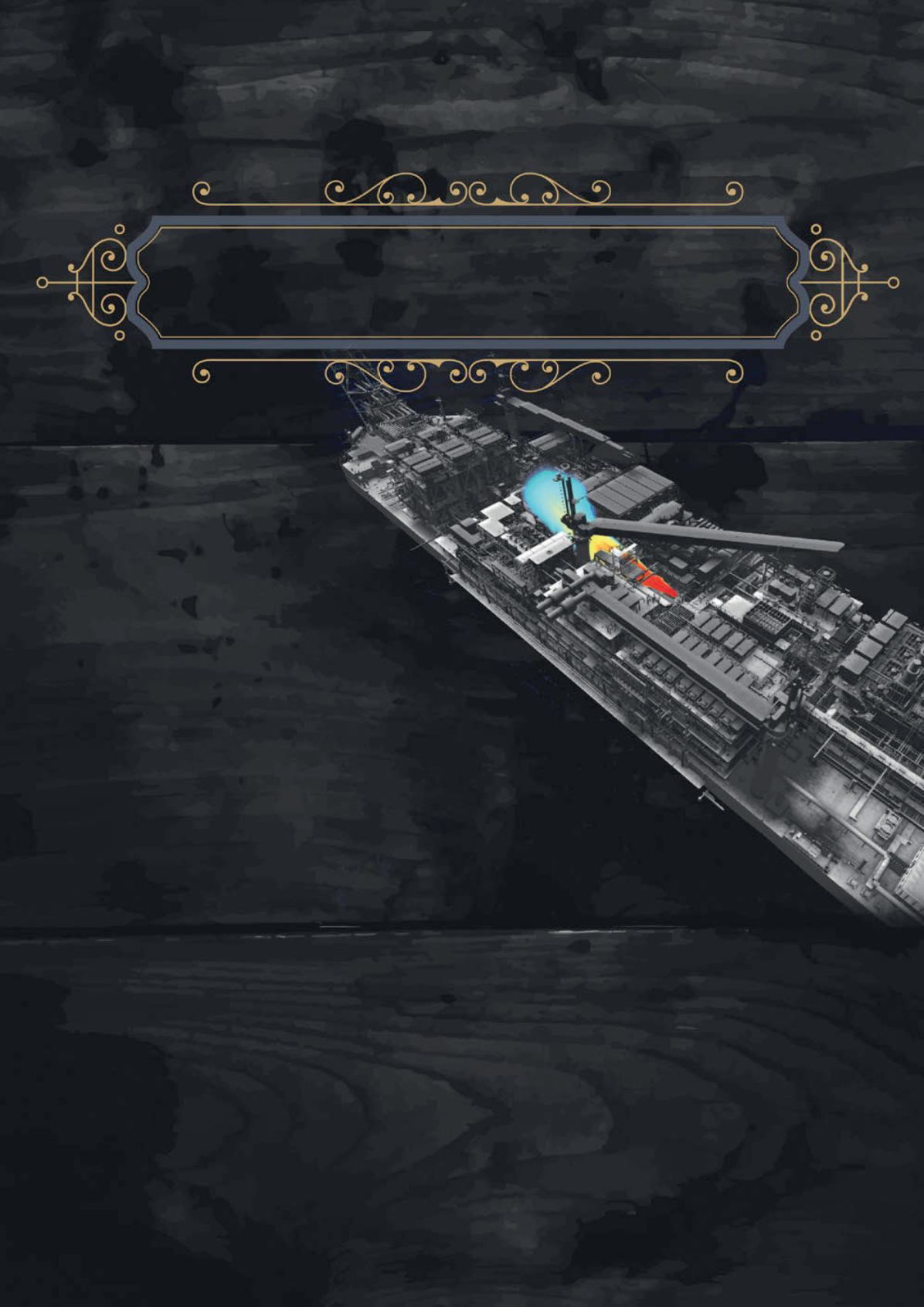
41
H
istorically, gas found
and produced in one market
would be transferred by an
LNG carrier to another market, regasified and
distributed by pipelines. With increasing demand
and industry competition, speed to market is critical.
LNG regasification vessels, as well as floating storage and
regasification units (FSRUs), have provided the industry
with the opportunity to get gas to market in a more efficient
way. Floating LNG (FLNG) is considered to be the next step
in this ‘naturally’ evolving industry, offering a number of
associated benefits, such as the following:
Minimising environmental impact due to its offshore
location.
Reducing delays related to permitting issues.
Providing a more flexible solution (can be easily moved
to a new location when required).
Allowing isolated users who are not connected to the
grid to access natural gas resources.
Accessing stranded gas reserves.
Providing an alternative energy source for operators to
develop.
As the number of proposed FLNG facilities increases to
meet the demand for transportation of gas reserves
stranded in remote offshore locations, such as
Southeast Asia and Africa, it is essential that the risks are
fully understood within the concept design phase.
REFINE THE DESIGN
Johnathan Green, UK, and Suba Sivandran, Singapore,
BMT Fluid Mechanics,
highlight the role that computational fluid dynamics
and wind tunnel testing can play in optimising the design of an FLNG unit.


